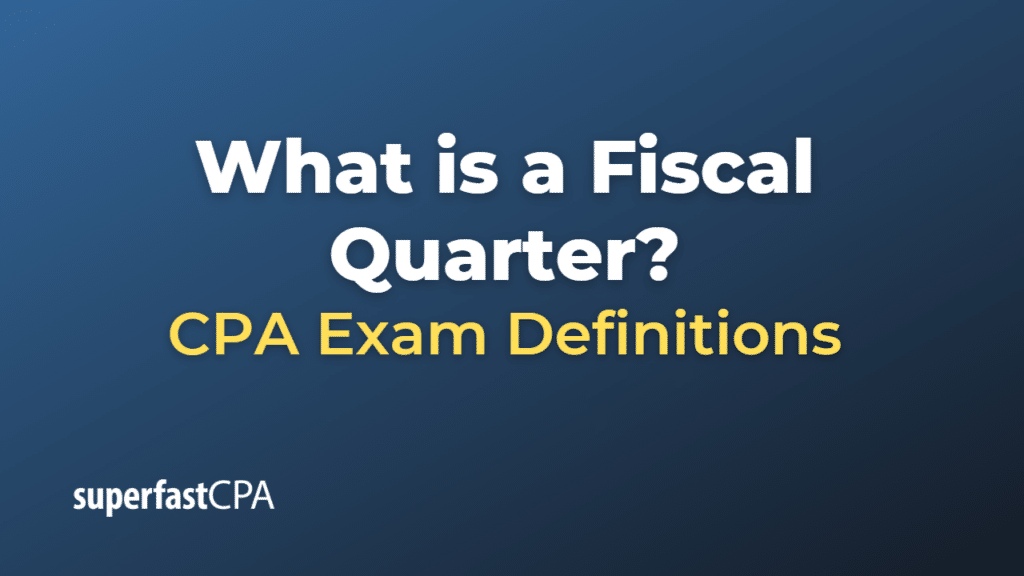Fiscal Quarter
A fiscal quarter is a three-month period during a company’s fiscal year when financial activities are calculated and reported. Most businesses divide their fiscal year into four quarters for this purpose.
In many countries, particularly those that follow a calendar year (January to December), the fiscal quarters are:
- Q1: January 1 – March 31
- Q2: April 1 – June 30
- Q3: July 1 – September 30
- Q4: October 1 – December 31
However, not all companies follow a calendar year for their fiscal year. For instance, the fiscal year for the U.S. federal government starts on October 1 and ends on September 30. So, its fiscal quarters are:
- Q1: October 1 – December 31
- Q2: January 1 – March 31
- Q3: April 1 – June 30
- Q4: July 1 – September 30
Similarly, some companies may have their own custom fiscal years based on their operational or industry-specific needs.
Regardless of when it occurs, the end of each fiscal quarter is a significant time for companies because they usually calculate and report their financial performance for that quarter. This includes metrics such as revenues, expenses, net income, and earnings per share, which are closely watched by investors, analysts, and other stakeholders.
Example of a Fiscal Quarter
Let’s consider an example of a company that follows the regular calendar year, Apple Inc. Apple’s fiscal year aligns with the calendar year, which means its fiscal quarters are as follows:
- Q1 – January 1 to March 31
- Q2 – April 1 to June 30
- Q3 – July 1 to September 30
- Q4 – October 1 to December 31
So, let’s say it’s now the end of June. Apple has just finished its second fiscal quarter (Q2). During this time, it will calculate and report its financial performance for the quarter, which includes revenues, expenses, and profits. This is often done through a quarterly earnings report, which is released to the public and discussed in an earnings call.
For example, Apple might report the following for Q2:
- Revenue: $60 billion
- Cost of Goods Sold (COGS): $30 billion
- Operating Expenses: $10 billion
- Net Income: $20 billion ($60 billion in revenue – $30 billion COGS – $10 billion operating expenses)
These figures will be compared to the company’s performance in previous quarters and the same quarter of the previous fiscal year. They will be used by investors, analysts, and others to assess Apple’s financial health and business performance.
Remember, the specific dates of fiscal quarters can vary if a company doesn’t follow a calendar year for its fiscal year. For example, the retail giant Walmart’s fiscal year begins on February 1 and ends on January 31, making its fiscal quarters different from those of a company like Apple.













